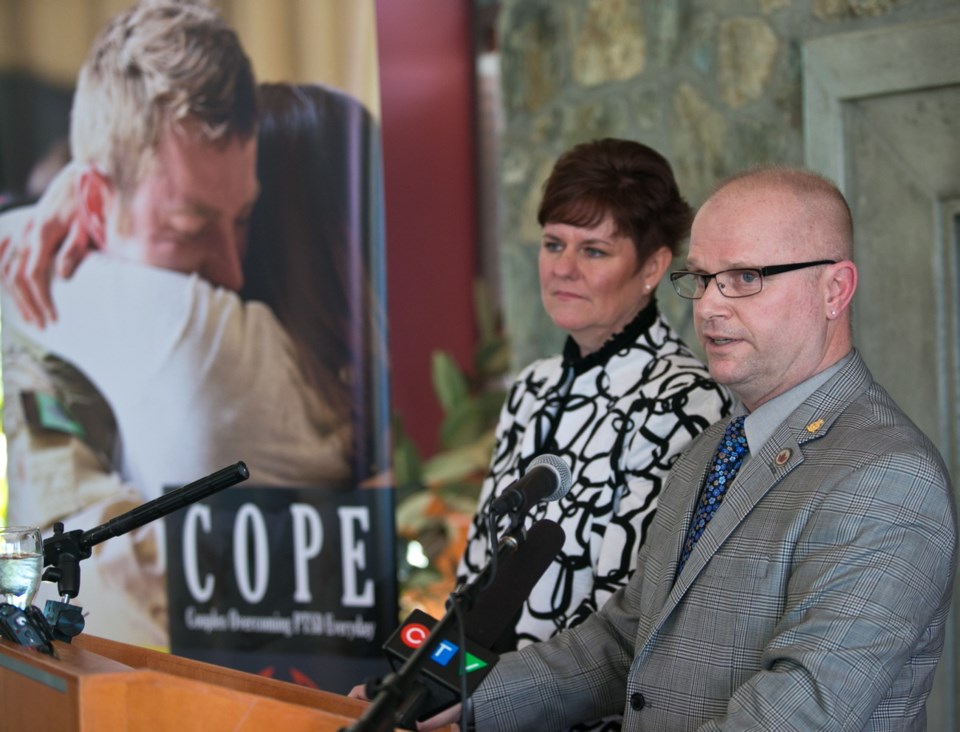 Remembrance Day is mostly about the incomprehensible number of shockingly young people who went off to wars and never came home.
Remembrance Day is mostly about the incomprehensible number of shockingly young people who went off to wars and never came home.
There were about 65,000 Canadian dead in the First World War, a time when the country’s population was eight million. About 47,000 were lost in the Second World War, from a national population of 11.6 million. That fatality rate means every single community across the country experienced the horror, in almost every neighbourhood.
Tens of thousands more were injured, which spread the shock even deeper.
My family’s scrapbook includes a 1944 Department of National Defence letter to my grandmother. “It is my painful duty to confirm the telegram recently received by you which informed you that your son, Pilot Officer John Leslie Leyne, is reported missing on Active Service.”
I’ve written about his story several times in the past. His bomber crew was shot down over Belgium and the seven of them survived some remarkable adventures, coming home to live out their lives comfortably.
Every time I glance at the letter, I’m struck by how many thousands of those traumatizing bombshells went out, many with worse news. The anguish was so deep and so widespread, it’s no wonder Remembrance Day still resonates so deeply.
But there’s another aspect to the idea of paying tribute to those who suffered and died in military service. There’s a small, specialized field of study that focuses on helping soldiers who returned home from being in harm’s way with severe hidden problems. Post-traumatic stress can inflict problems just as severe as the more obvious physical combat wounds. And while the world wars are receding in history, more recent conflicts are producing new victims.
Three Victoria people are deeply involved in helping them.
Retired Lt.-Col. Chris Linford is three years into a project he and his wife Kathryn started to help not only soldiers, but their spouses and families, recover from post-traumatic stress.
He served with the mission that tried to curb a grotesque tribal genocide in Rwanda in the 1990s and later with the combat mission in Afghanistan. The experiences triggered severe personal problems that almost destroyed his family. The couple’s success in overcoming them led to the intensive program for couples they’re busy running today.
“There are a couple of layers of thought for me on Remembrance Day,” Linford said Thursday. “The first is the more traditional thing to think about, the veterans of previous wars. Being a military guy, it’s in my soul.”
But he thinks of contemporary loss, as well. He has been to many ramp ceremonies in Afghanistan and funerals at home.
In the days before Nov. 11, “I find my emotions very high. It doesn’t take much to get tears from me.”
The topic came up at a dinner with other veterans this week and he said all agreed “it’s a tough time of year.”
His thoughts also extend to the price families pay whenever service people are posted away.
“That does impact the family in a profound way, the sense of fear. There’s an impact over time.”
The ripple effect of anxiety extends to the post-traumatic stress that the couple is addressing.
“We discovered it was not just my PTSD, it was our PTSD.”
That’s the key thrust of University of Victoria professor Tim Black’s work. He has spent much of his career in psychology helping veterans cope with the syndrome. He has worked with the Linfords in setting up and refining treatment programs.
His ideas progressed from treating veterans with problems to helping with the whole sphere of transitioning (the Veterans Transition Network). One of the more recent innovations is extending treatment beyond the soldier to the family.
Black said the military and civilian worlds are somewhat separated in Canada. Canadian soldiers are recognized worldwide for their professionalism, but there’s a bigger gap between them and the civilian world than elsewhere.
That separation vanishes today as people gather to pay tribute. Said Black: “I honour the sacrifice, but I also think about the people who are here and alive and struggling.”
If you want to continue the recognition, check out Wounded Warriors Canada online, which is currently the sole source of funding for the Linfords’ work.



